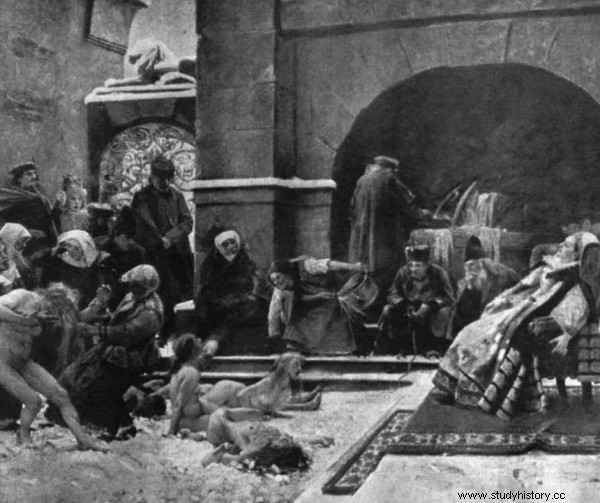"Dracula in a skirt", "Bloody Countess" or "Vampire from Csejte" are just some of the nicknames given to Elizabeth Bathory. It turns out, however, that the bloodthirsty beast was made of it completely wrong. She was the victim of a conspiracy against her family.
In pop culture, Elżbieta Batory functions as a mad woman obsessed with the desire to preserve eternal youth. To achieve her goal, she was to bathe in the blood of the virgins she murdered, whom she also liked to torture. As if that was not enough, she was also supposed to practice black magic and take part in numerous orgies.
The problem is that all of this is not true. The black legend of Elizabeth has been refuted by Hungarian historians for some time, and the results of their research are presented by Adam Szabelski in an article published in the journal Studia Europaea Gnesnensia.
The Habsurgist conspiracy
Elżbieta Batory came from a powerful magnate family, and after her husband's death in 1604, she inherited the property of two other noble families. Her estates were located both in the Habsburg part of Hungary and in Transylvania, which was dependent on Turkey. The principality was ruled by her relative, Gabriel Batory, but she herself was a subject of the German Emperor, who also held the title of King of Hungary.

Castle ruins in Čachtice (Hungarian Csejte). This is where Elżbieta Batory was based (photo:LMih, CC BY-SA 3.0).
In 1610, Gabriel was getting ready to go to war with the Habsburgs. If Elizabeth were to side with him, it could turn the tide of victory to his side. Perhaps it was this fact that decided that on December 29 that year, the palatine György Turzó arrested the magnate, accusing her of murder.
There are also financial motives: if the royal court convicted Elizabeth of murder, the monarch would take over at least 1/3 of her property . However, the clever widow has made sure against this, they are dividing all their property among their three children.
Process that wasn't there
The evidence in the case was the testimony of witnesses of the alleged crimes, forced by torture. They were contradictory and full of inaccuracies. All interrogated also claimed that they had not seen anything themselves, and had only heard about the alleged killings. There were supposed to be over three hundred of them which is a totally unbelievable number. Would the Hungarian nobility send their daughters to Elizabeth's court if there were murders on such a scale? It would not be concealed after all.

Elizabeth Bathory and brought her virgins. Painting by Istvan Csok from 1895.
The accused, however, never lived to see the trial. It seems that the palatine Turzó was aware of the fragility of his evidence. Moreover, Batory was arrested illegally, as the law prohibited the imprisonment of noblemen and noblewomen without a court sentence. In this situation, it was more convenient not to push things forward. The unfortunate woman died after four years in solitary confinement.
Vampire? And where is there
Finally, it should be added that the legend of black magic and blood baths was born only in 1729. Its creator is László Turócz, author of the work "Ungaria suis cum regibus compendio data". Probably by slandering a century-old magnate he wanted to discredit the then prince of Transylvania, Francis II Rakoczi, Elizabeth was one of his ancestors. The credibility of this message is practically non-existent, but for several hundred years it influenced the image of a woman who was in fact an innocent victim of a political conspiracy.
The source of the above news is:
- Adam Szabelski, The figure of Elżbieta Batory in historiography , "Studia Europaea Gnesnensia", no. 9/2014, pp. 95-104.
